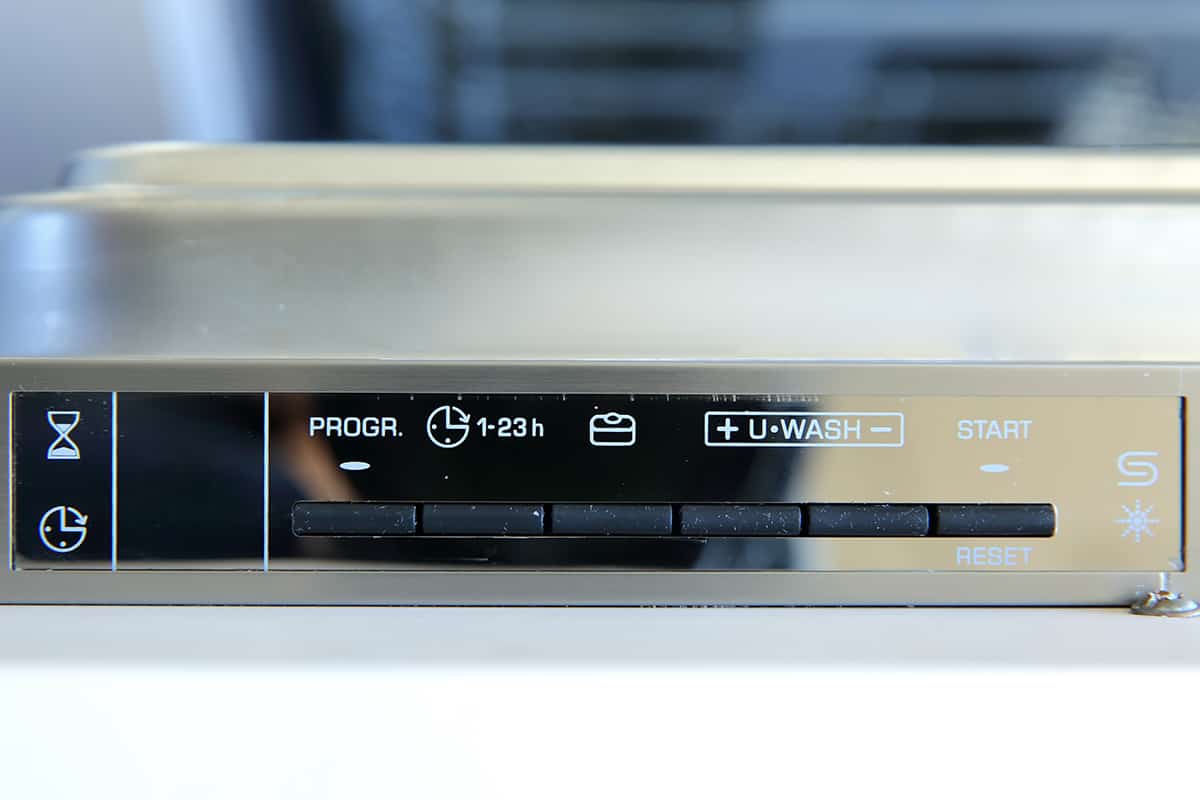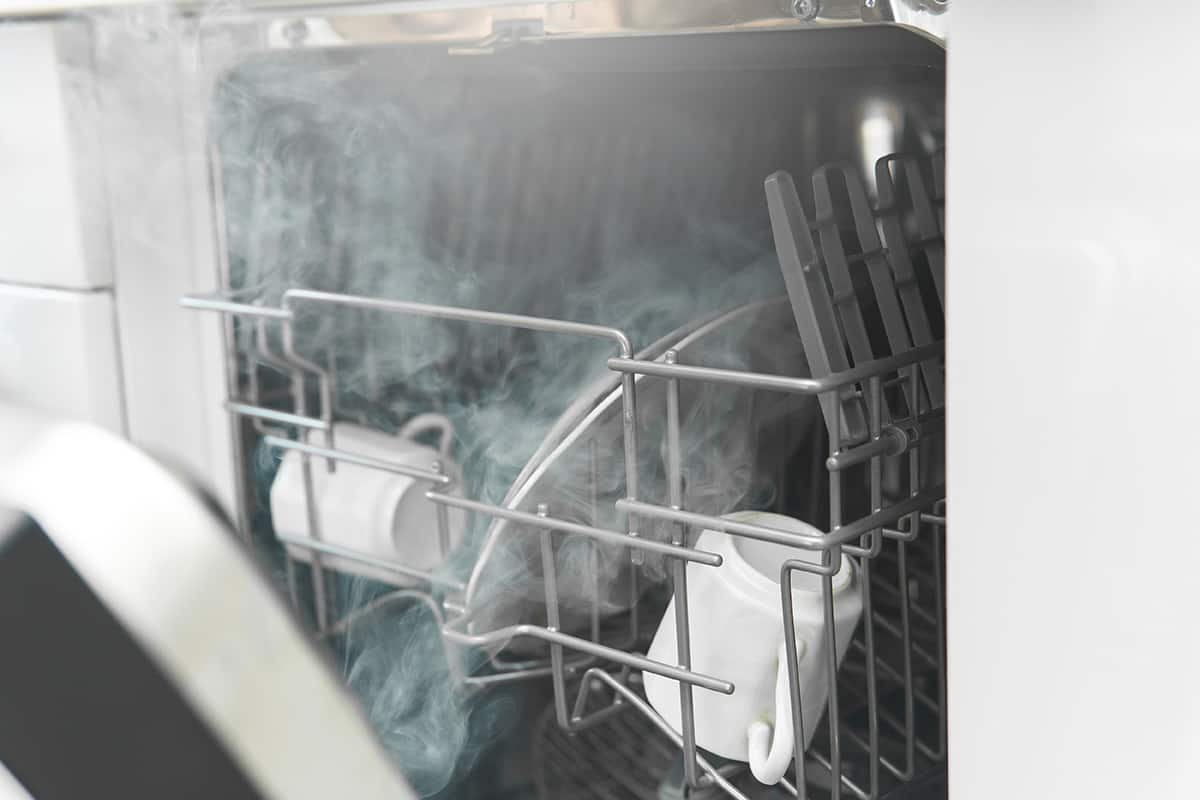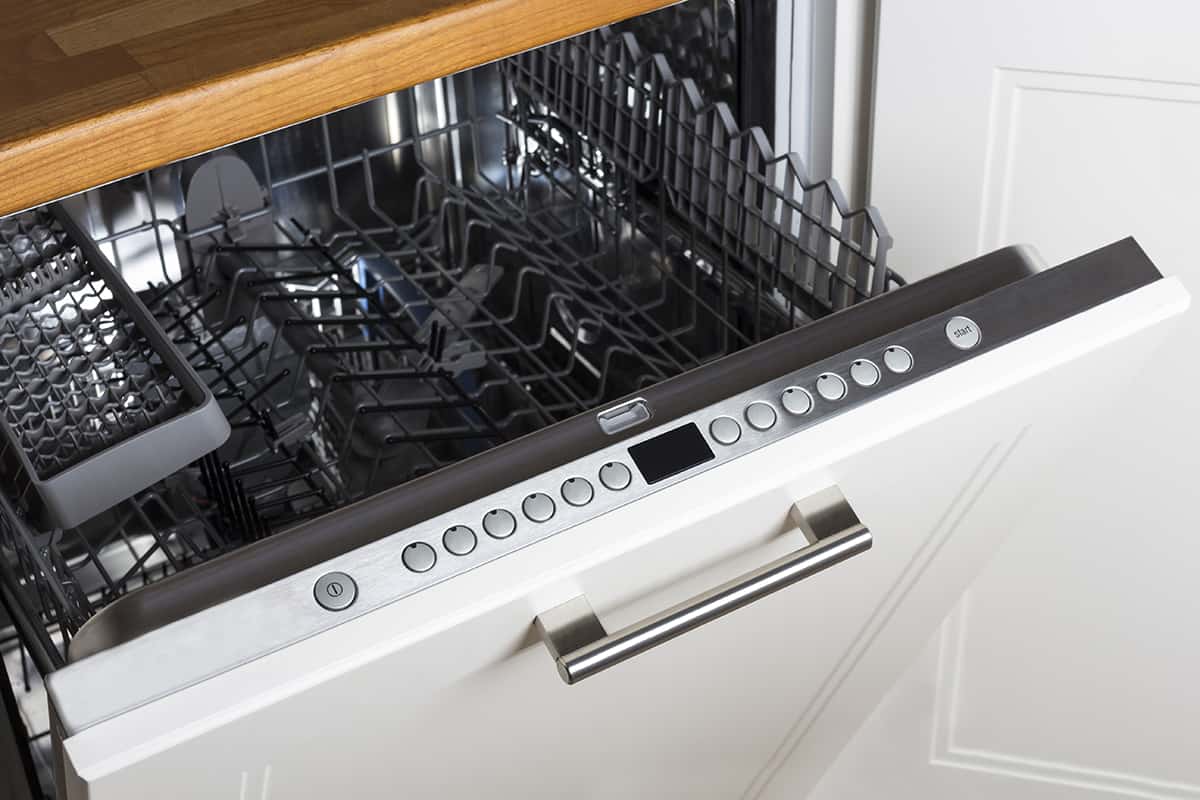Dishwashers have an average life expectancy of 7 years, assuming you run five cycles every week consistently. However, within that 7-year time window, maintenance issues may arise, some of the most concerning of which involve the dishwasher’s heating element. So, what do you do when your dishwasher’s heating element stays on after completing a cycle?
One possible cause of your dishwasher’s heating element remaining on after a wash cycle is a faulty electronic control board. To solve this problem, you should try running a full reboot cycle or unplug the dishwasher for 10 minutes before turning it back on.
In this guide, I’ll explain the various causes of this problem and what you should do to resolve the issue.
Dishwasher Heating Element Won’t Turn Off—Causes and Solutions

In this section, I’ll discuss the possible causes behind a dishwasher’s heating element failing to turn off at the right times and what you can do to resolve the issue.
Defective Heating Element
It makes sense to inspect the heating element if it doesn’t shut off when it’s supposed to. However, in most instances, a defective heating element will lead to insufficient heating, not failing to shut off when it’s no longer needed. Still, it’s worth checking to ensure that everything is how it’s supposed to be.
Solution: Inspect the heating element for damage
Remove the back panel of your dishwasher and look for the heat motor. It should be connected to the heating pipes that run through the bottom portion of your dishwasher. If it turns on, you don’t need to check for continuity, but you will have to see whether the motor is damaged in any way.
Defective Thermostat
The thermostat inside a dishwasher tells a built-in timer to activate the heating element for a set period of time. If the thermostat is on the fritz, it may tell the timer to turn on but not when to shut off.
Solution: Inspect the thermostat for damage
A damaged thermostat is incredibly rare, but it’s worth looking at while you have the back panel of your dishwasher removed. The thermostat, which looks like a metal rod with 2 prongs, should be connected to the heat motor. Disconnect it from the heat motor and inspect it with a multimeter for continuity.
Defective Timer
The timer tells the dishwasher when to start heating up water and for how long. A defective timer may instruct your dishwasher to turn on and remain on continuously until the thermostat either informs it to stop or when the heat motor burns out, which is the absolute worst-case scenario. One clear indicator that the timer is damaged is noticeable wear and tear on the heating element pipes. If the timer is defective, it may cause the heating element to run indefinitely, which may lead to cracks and/or discoloration along the heating pipe.
Solution: Inspect the timer for damage
The timer is connected to the kickplate panel of your dishwasher. You will need to use a screwdriver to remove the screws that anchor it to the kickplate. Again, use a multimeter to determine whether or not it’s in working order.
Defective Control Board
This is perhaps the most common cause behind your dishwasher’s inability to shut off the heating element. The electric control board is responsible for giving instructions to the dishwasher, from filling up with water to turning the heating element on and off to draining the tub. Over hundreds of washes, the control board may have retained washing instructions from past cycles that need to be erased.
Solution #1: Reboot your dishwasher
To reboot the dishwasher, unplug the power cable from the wall outlet. If your dishwasher is hardwired, flip the circuit switch connected to your dishwasher. Wait for 10 to 15 minutes before plugging the dishwasher back in or turning the circuit switch back on. Wait an additional 5 to 10 minutes before turning on the dishwasher and inspecting the heating element.
Solution #2: Put your dishwasher in service mode
Running service mode or a diagnostic cycle will clear the dishwasher’s memory, restoring it to its factory settings. This will get rid of all the past wash cycle settings that may have interfered with the dishwasher’s current settings.
If you have a Kenmore dishwasher, you can read this guide on how to reset a Kenmore dishwasher. Otherwise, you will have to look at the instruction manual to figure out the button sequence to run service mode.
Blocked Spray Arm
In rare cases, the dishwasher’s spray arm may be the sole culprit behind your dishwasher’s inability to turn the heating element on and off. If something is in the way, it can trigger your dishwasher to assume that it’s in the middle of a wash or rinse cycle, and trigger the heating element to turn on.
Solution: Remove the blockage
Remove the bottom rack of your dishwasher and inspect the spray arm. If anything has fallen down there, such as silverware or even pieces of plastic, it might be the cause of the problem. Remove all blockages before turning the machine on and off. Again, this is a very rare cause, but it’s worth inspecting if the previous steps haven’t worked for you.
What If the Heating Element Still Won’t Turn Off?

If all else fails, it might be time to reach out to the manufacturer or a professional repair contractor. The longer you allow the problem to persist, the more damage it may cause to your dishwasher, so you should get the problem resolved as soon as possible.
Will Canceling a Cycle Solve the Problem?
Canceling a cycle in a dishwasher involves opening the door mid-way through a cycle or pressing the power button to turn the machine off entirely. Generally speaking, canceling a wash cycle will only cause the dishwasher to start the cycle from the start, not completely get rid of previously input instructions.
To cancel the cycle entirely, you will have to perform a hard reset by unplugging the machine, waiting 10 to 15 minutes, and plugging the machine back in. Believe it or not, turning off a device and turning it back on—whether it’s a computer, an internet router, or a dishwasher—is a fairly reliable solution for most problems.
Should I Replace the Heating Element?
A dishwasher’s heating element has an expected life expectancy of up to 18 months after the date of purchase. As the heating element ages, it becomes less efficient at bringing water up to a sanitizing level, which means that your dishwasher has to work double-time in order to reach optimal performance.
However, replacing the heating element of a dishwasher is only necessary in the most extreme cases. Most people would advise that you replace the heating element only when there is visible damage to it—e.g., rusting, cracking, blistering, snapping, etc. If it’s still in working order (determined by a positive reading via a multimeter), then you do not need to purchase a heating element, heat pump, or timer replacement.
Before purchasing a replacement and getting it professionally installed, try the previous solutions I advised earlier to see whether or not they solve the problem.
Can I Rush a Dishwasher Without a Heating Element?
Yes, you can. It’s entirely possible to run a dishwasher cycle without the use of heated water. Simply input the correct wash cycle, and the dishwasher will forego the steps that involve heating and air-drying.
Of course, the heating element has a greater purpose than just bringing water up to temp, which you can do by altering the settings on your water heater. A dishwasher’s heating element introduces hot, dry air into a dishwasher’s tub to cause leftover moisture droplets to evaporate more quickly. In short, the residual heat inside your dishwasher will make your dishes dry in less time.






